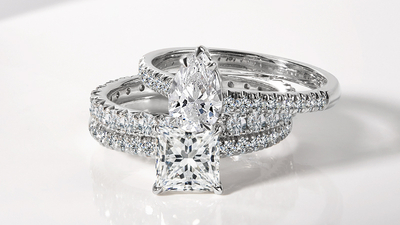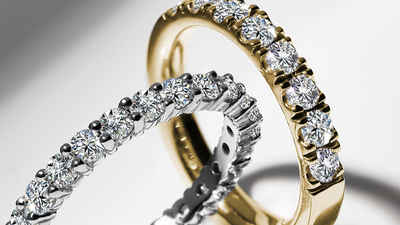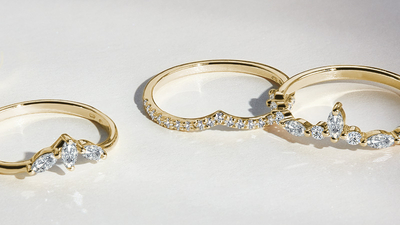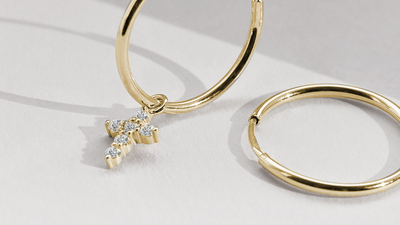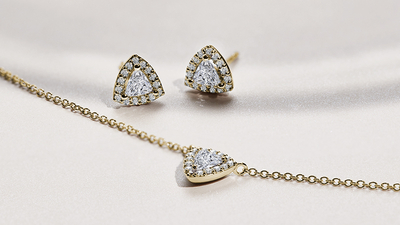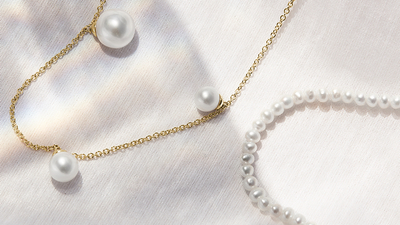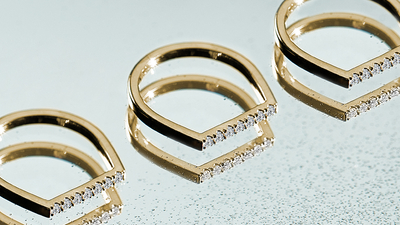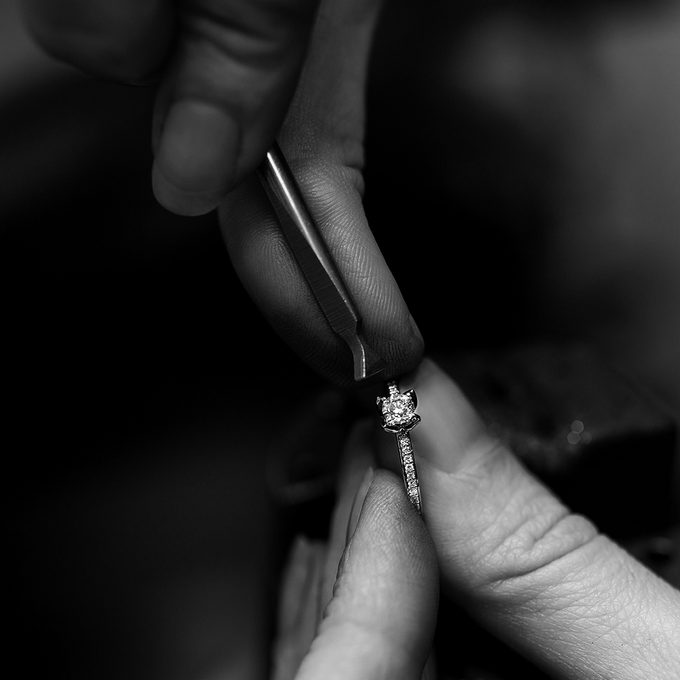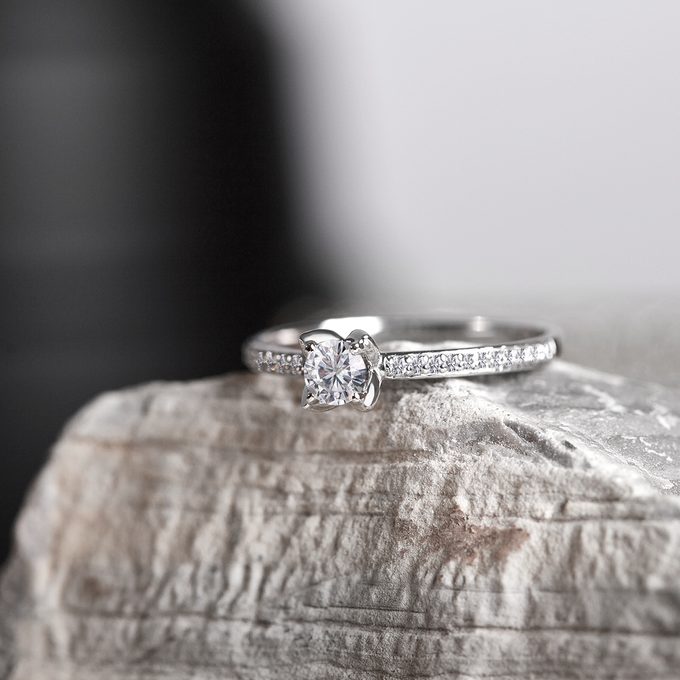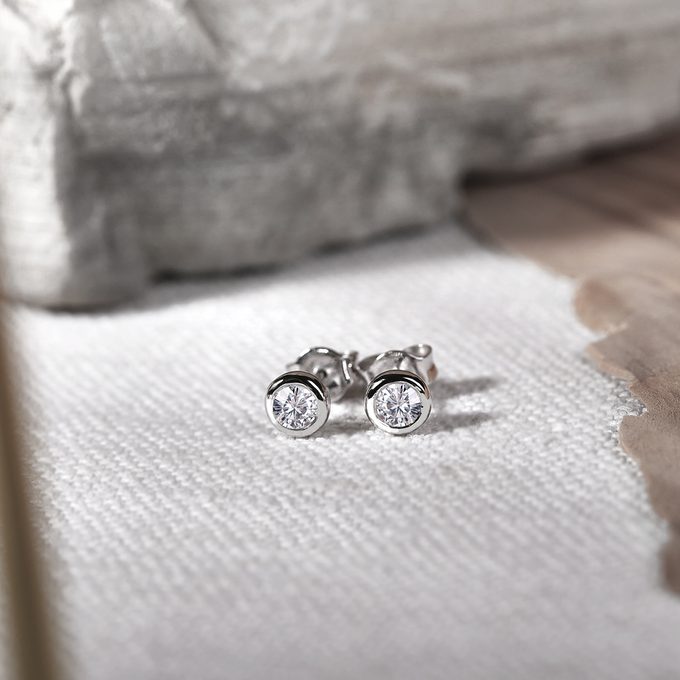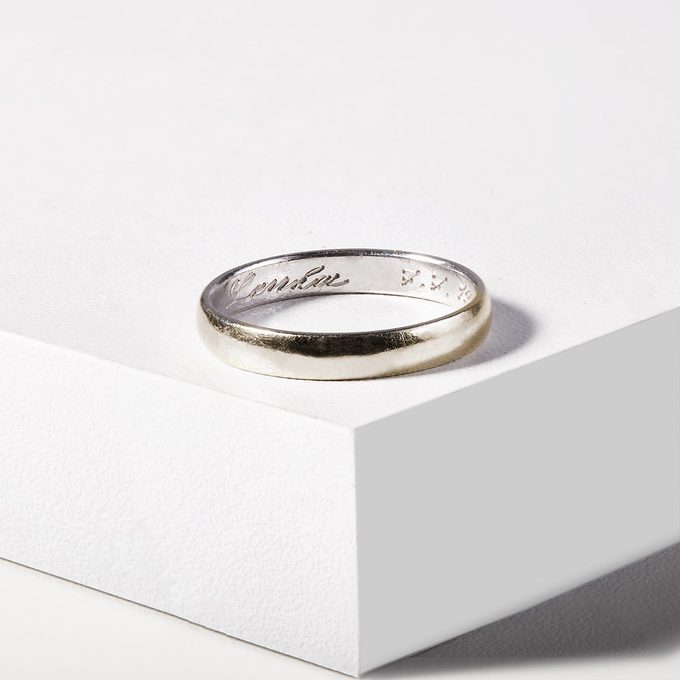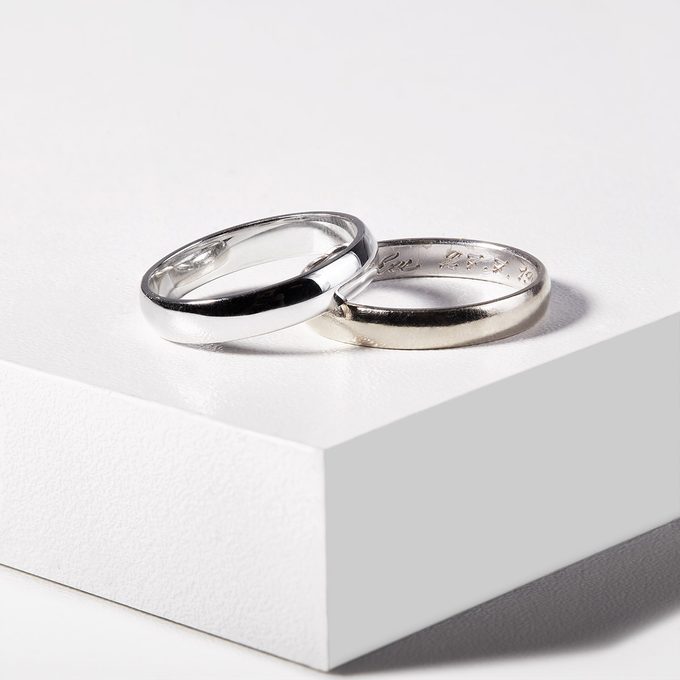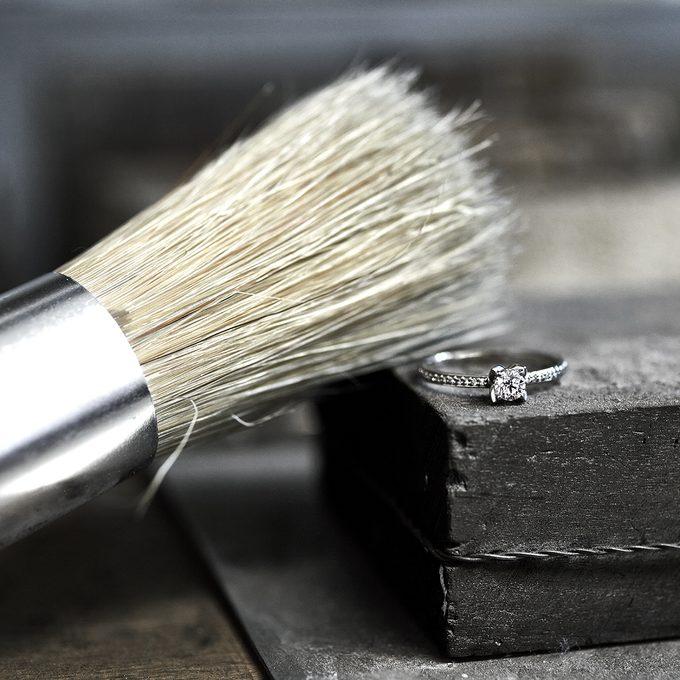An engagement ring made of white gold is currently the most popular choice among those who are about to get married. In combination with a solitaire diamond, it is a timeless classic that will enchant and delight every woman. For the rest of her life, the ring will make her happy not only as a beautiful piece of jewelry, but also as a symbol of your love.
However over time, white gold jewelry may appear to take on a beige color. This is a completely natural process which we will explain in detail in today's article. And there is nothing to fear - it is not an irreversible process. Restoring a piece of jewelry to its original whiteness and luster is in fact very easy.
White gold engagement rings made with love in our studio
At KLENOTA, making engagement rings is a matter of the heart for us. Our goldsmiths know that when it comes to making things by hand, every detail matters so each piece of jewelry goes through the hands of several experienced experts who will guide it to perfection. We believe that an engagement ring in particular is a piece of jewelry that should live with you for the rest of your life, which is why we place a great deal of emphasis on the quality of the materials used. We make jewelry exclusively from real 14k gold and we work only with materials from proven suppliers or we make our own alloys, which are then verified and registered with the government hallmarking office.
How is white gold made?
Gold in its pure form has an intense golden yellow color. However it is very soft, so it is unusable in jewelry production. It must therefore be mixed with other elements that give it more suitable properties - especially a greater hardness. This process is called alloying and one such result of alloying is white gold, which is ideal for making rings because it is harder than yellow or rose gold.
White gold is available in the traditional 14 karat form, but you will also find it in the form of 18 karat gold. It is a mixture of four elements - nickel, zinc, manganese or palladium which are added to the gold. Sometimes white gold can contain all four, but there must always be at least two of them in the alloy. These metals then help to cover up the natural yellow color of gold. So that's why white gold will never be perfectly white, but yellowish - and an 18 karat gold alloy will be more beige than 14 karat gold because it contains more yellow gold.
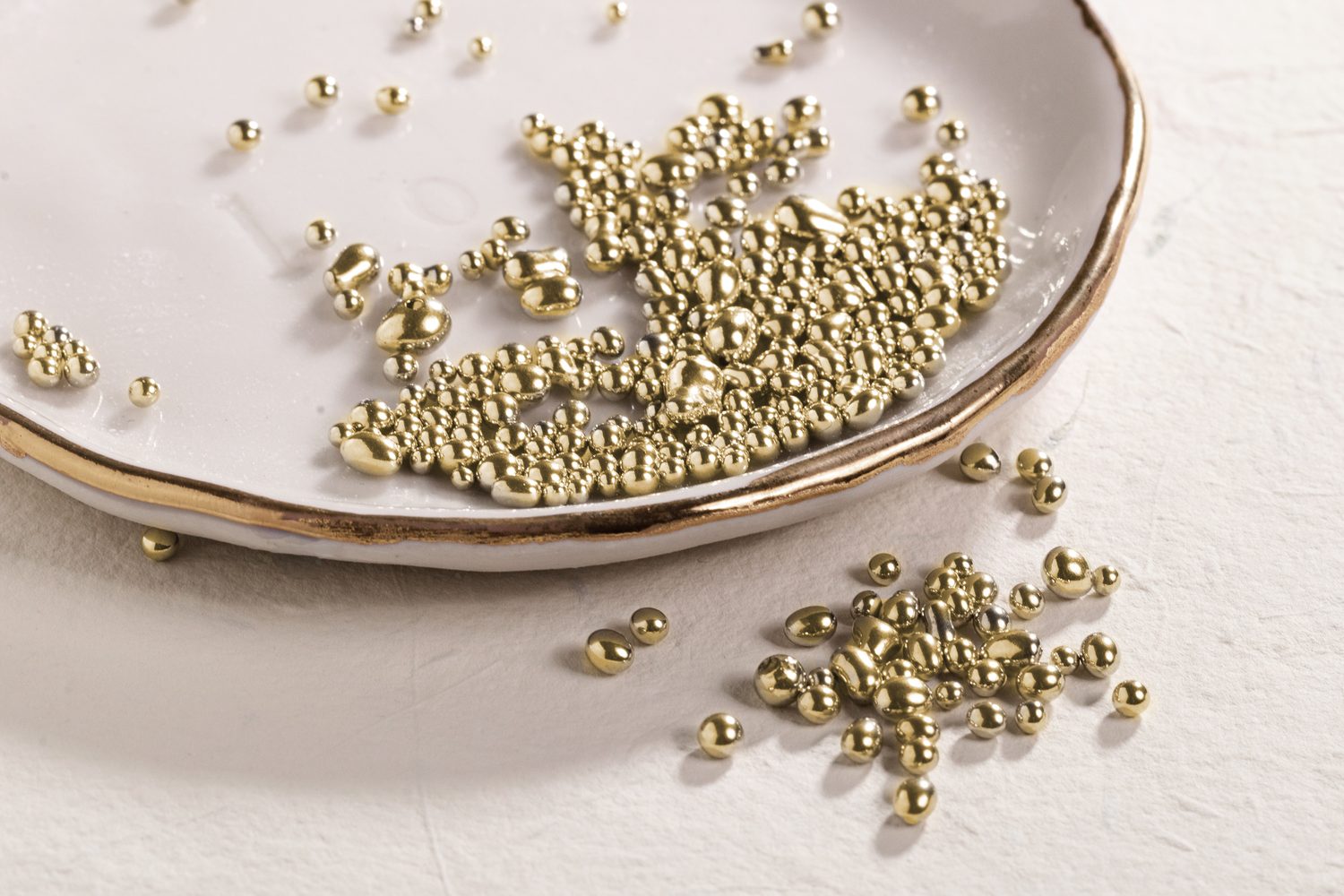
Why does white gold turn yellow?
Yellowing is affected by the alloy that the jewelry is made from. But it always depends on the types and ratios of elements which have been added.
- A gold-palladium alloy is grayish white in color, but it is very expensive and softer than other alloys.
- White gold with zinc is harder, slightly yellowish in color, is good to work with and it can be cast, so you will most often come across it with cast jewelry, which makes up most of what is sold today by jewelers of mass produced jewelry.
- White gold with nickel is the hardest mix and is whiter compared to zinc alloys. It is commonly used for handmade jewelry - most often rings. Its disadvantage may be that nickel is an allergen. However, the amount of nickel in the alloy is monitored by the hallmarking office and is very minimal, so most people don’t tend to have problems.
As a final step, white gold jewelry is plated with hypoallergenic rhodium. This gives it a silvery white appearance and a protective layer.
Yellowing is not just a matter of time
Gold can also react with the skin. This is because the skin creates certain substances such as natural acids which the base metals in the alloy can react to and which can ultimately actually change their color and turn them yellow. The color change is especially noticeable in places where the jewelry has been in contact with the skin. In other circumstances metals may react for instance with chlorine, which is commonly used to purify pool water. Some alloys can also be sensitive to seawater, detergents and cosmetics. A fun fact - rose gold contains a lot of copper so if we let a stronger acid react with it for a few hours, it will turn green.
Does all white gold turn yellow? Yes and no...
As already mentioned, white gold yellowing over time depends on the type of alloy and the ratio of the elements added to it as well as on any chemical reactions which we expose the jewelry to. If the jewelry changes color over time, this is dependent on more than one circumstance one and it’s not always the case that it will happen.
A change in the color of gold is most often visible in rings where as a result of regular wear and friction against the skin, a layer of rhodium has been wiped off and has exposed areas of the jewelry. The life expectancy of the rhodium plating depends on its thickness – strictly speaking it should be between 0.75-1.5 micrometers thick. Just to give you an idea - one micrometer is the size of a single bacteria while a human hair is about 100 micrometers. If an appropriately thick layer of plating has been applied, then the rhodium layer on the ring should last one to two years and after that the original beige color of the metal may begin to appear and the ring should be sent in for complete surface restoration, including rhodium re-plating.
Is yellowing really bad?
At the KLENOTA jewelry studio, we are convinced that a change in the color is not a bad thing. It is part of the natural process of gold and does not devalue or irreversibly change the jewelry. Your piece of jewelry will acquire a special personalized patina and is then literally unique – yours and yours alone.
We wait for this patina with a leather handbag and we are happy at how it changes and ages the bag beautifully over time so you should love it in jewelry as well. A patina is proof that your jewelry lives with you and has witnessed everything you have gone through.
How to return a ring to its original whiteness - it's easy!
If a piece of genuine gold really turns yellow over time, this is never an irreversible change. You can simply leave such jewelry with us to be cleaned or polished back to its original beauty, or to be rhodium plated again. As part of KLENOTA services, we provide all our customers with our standard KLENOTA jewelry service free of charge. This includes ultrasonic cleaning, steam cleaning, inspection of the jewelry and its prongs, as well as tightening any gemstone settings and sterilizing with UVC light.
We will also gladly re-plate your white gold jewelry with rhodium again and restore its radiance and shine. This means cleaning, re-polishing, possible repairs and re-applying a rhodium layer. If you are interested in jewelry cleaning or completely restoring your jewelry, please write to us at info@klenota.com and we will work out the appropriate next steps with you.
